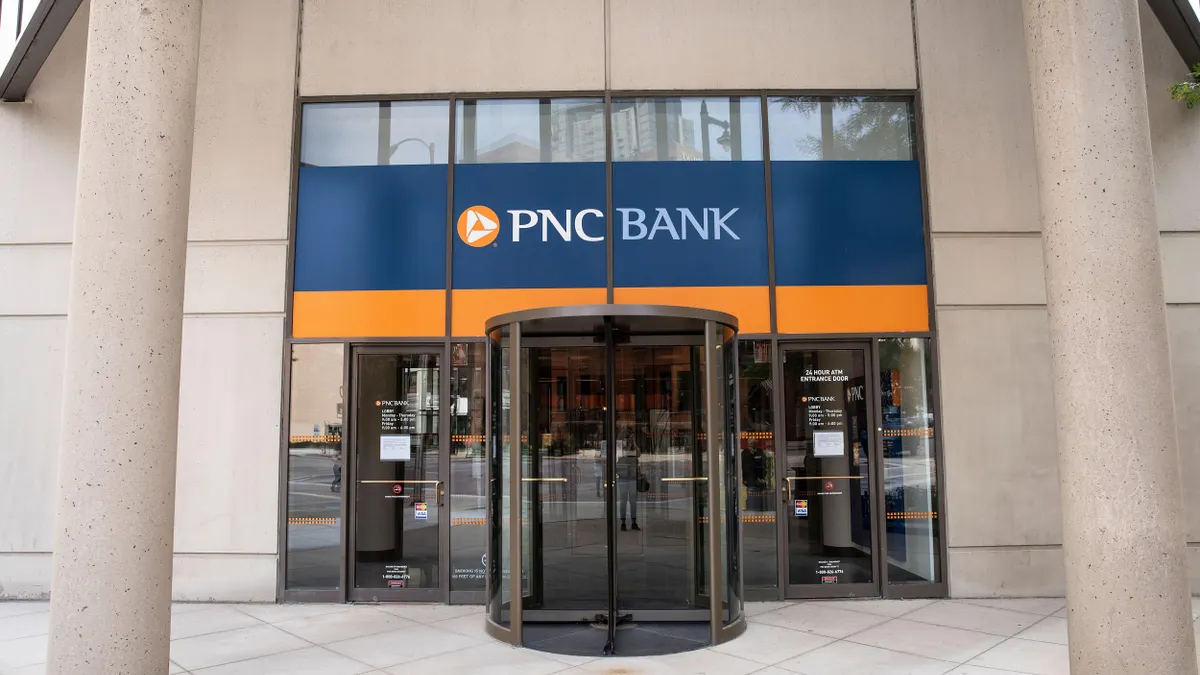Naveed Anwar is fine with the notion that banks are trying to keep up with fintechs when it comes to innovation.
“I actually welcome that, because you can’t build every single thing in-house,” said Anwar, global head of platform and data services for Citi’s services business.
In taking a micro-services architecture approach, the bank considers what it’s good at versus where it can buy capabilities.
“You can name a fintech, they’re probably a customer for Citi, but then they're also probably giving us a solution,” he said during an interview last week at the Money20/20 conference in Las Vegas.
The New York City-based bank also invests in fintechs through Citi Ventures, “so that way, we can actually influence some of the roadmap as well, for the solutions that we're looking for,” Anwar said.
At the conference, Anwar, who oversees technology, product management and design for Citi’s services unit, met with current and potential customers.
“They might have a relationship with an existing bank which is giving them presence in about 20 countries, but those 70 other countries that they want to go and expand on, they are looking at a net new relationship, and that’s where we can bring some consistency and experience to these clients,” he said.
In many cases, companies forge a commercial banking relationship with Citi when they’re young, and as they expand transaction volume and their operational footprint, Citi’s services unit enters the equation. The bank’s services business, which helps about 19,000 clients around the world manage and move money, operates in 91 countries and 135 currencies.
Consistency is key. “It is very important for us to not give them an apple in the U.K. and an orange in the U.S., because that's what companies hate,” he noted.
There can be challenges, however, to providing a consistent experience across borders, “especially when you have different regulations in place, so you have to look at the most common denominator and work backward from it,” he said.
In India, for example, data can’t leave the country, meaning someone in the U.K. can’t look at transactions in India, he said. The $2.6 trillion-asset bank has about 80% to 90% consistency across its 91 countries, Anwar said.
“How the client then manages it, we leave it up to them, but we at least provide the platform experience with entitlements of who should be able to look at what data and what access do they have,” he said.
Treasury departments for a lot of these big companies are very small, and they don’t get IT support, he said.
Anwar’s team aims to make it easy for those clients by providing “consumer-grade” platforms for large companies, enabling them to manage accounts and liquidity, or corporate credit cards. One of those consumer-like features is a “pizza tracker”-style tool to allow clients to follow the status of a payment made, Anwar said.
Increasingly, clients are looking for insights, not just the handling of a certain banking or payments function, Anwar said. Personalization is another aspect of a consumer-like experience that Citi has sought to bring to transaction banking, similar to Netflix, Spotify or Uber serving up tailored recommendations or insights to consumers, he said.
When a CFO logs in, for example, “I shouldn't be showing him every single thing,” Anwar said.
“I should be showing him based on his persona, based on the things that he wants to make decisions on,” he said. That might include account balances and liquidity structure, but not details on specific payments, he said. The latter might be “more at the worker level. When that person logs in, they get a different experience,” Anwar said.
That personalization also extends to choices around receiving alerts or notifications via mobile, a tablet or email.
“We're tailoring those kinds of experiences and those kinds of insights for our customers, and that's what our clients are looking for as well,” he said.
Delivering a consumer-like experience for large companies requires “a mindset of design thinking first,” Anwar said.
“When I joined the organization, the design team was an afterthought,” he said. “You try to understand, what are the processes that we're trying to improve? What is the journey that we're trying to actually facilitate for the client, and are we actually making it easier, or are we making it harder?”
Rather than pretty screens, it’s about process engineering, Anwar said.
“It is about optimizing the clicks that you actually go through,” he said.
Anwar’s team has also sought to alleviate client pain points, including hastening the account opening process for existing customers, and giving clients control over digital signer management for account maintenance purposes, he said.
As the bank collects feedback and considers other features and capabilities to add, Anwar feeds that into an internal AI tool to help prioritize further buildouts. Citi’s services unit is also using AI to assist sales teams, enable technology teams to code faster, reduce the time certain tasks take and arm customer service agents with more information so they can respond more effectively, Anwar said.






















